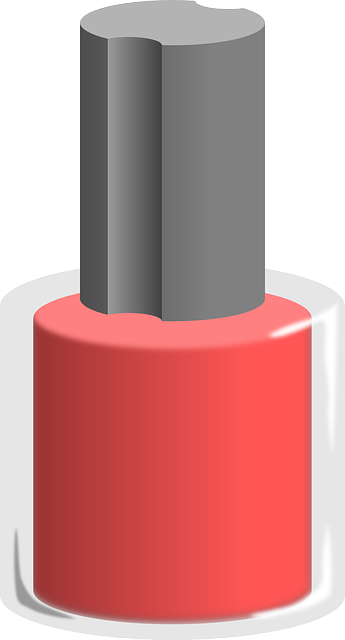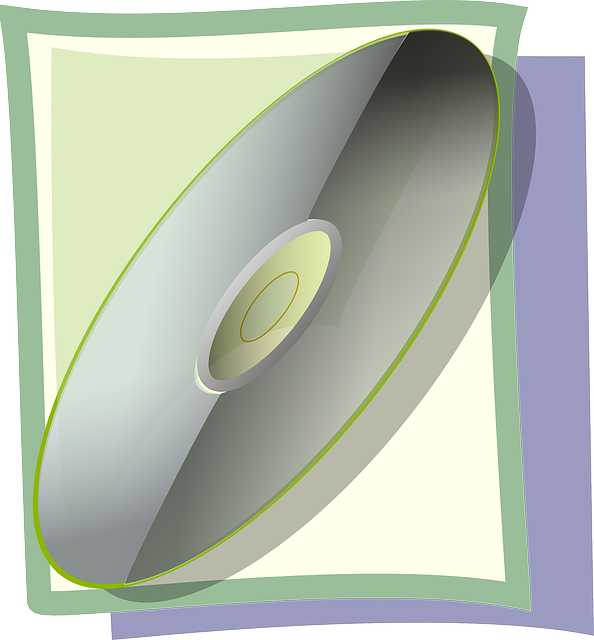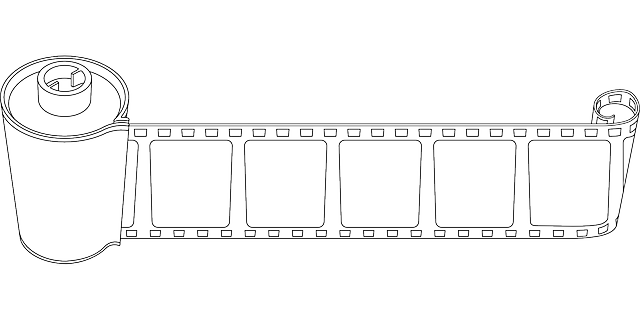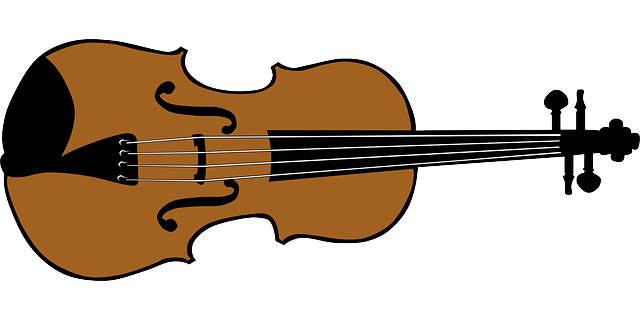المصعد الفضائى
المصعد الفضائى هوهيكل مقترح صمم لنقل المواد من جرم سماوي' سطح إلى الفضاء. متغيرات كثيرة قد اقترحت, التي تنطوي على جميع من يسافر على طول هيكل ثابت بدلا من استخدام الصواريخ الموجهة إطلاق فضائى. التي تنطوي على جميع من يسافر على طول هيكل ثابت بدلا من استخدام الصواريخ مفهوم غالبا ما يشير إلى حتى تصل إلى هيكل من سطح الأرض أوبالقرب منها خط الإستواء المدار (الهدف الاستراتيجي العالمي ولقاءة الدمار خارجها. .
تطبيق أحد أكثر أفكار الخيال الفهمية روعة على الإطلاق وهوالمصعد الفضائي، حيث يسعون لبناء مصعد سيقل الركاب مسافة 36000 كم في الفضاء ليصل بهم إلى سفينة فضائية في مدار حول الأرض.
ويأمل الفهماء حتى يستخدم هذا المصعد أيضا لنقل البضائع ونقل مولدات الكهرباء التي تعمل بالطاقة الشمسية وإيصالها للأرض، وربما أيضا استخدامها لإلقاء النفايات النووية إلى الفضاء!!!
وسيتم عمل مؤتمر دولي للإعلان عن الخطة الزمنية لبناء هذه الآلة.
أننا لا نتحدث عن العبث بقوانين الفيزياء مثل آلة الزمن أوالانتنطق الآني ولكننا نتحدث في اللقاء عن تحدي هندسي غير مسبوق، بحيث يحتاج الأمر تحقيق طفرات في مجالات الكيميباء والفيزياء وفهم المواد وهوما يشكل تحديا كبيرا أمام أكبر الشركات والجامعات اليابانية.
وسيكون أحد أكثر هذه التحديات صعوبة هوالكابلات التي ستحرك هذا المصعد للأعلى وللأسفل، فكما يقول البروفيسور يوشيوأوكي مدير مؤسسة المصعد الفضائي اليابانية وأستاذ هندسة الآلات الدقيقة في جامعة نيهون حتى هذه الكابلات يجب حتى تكون أقوى بـ180 مرة من الفولاذ، وفي نفس الوقت تكون أخف من أي شيء نعهده على الأرض لأننا نتحدث عن كابلات بطول 36000 كم حيث ستكون مثبتة في الأرض وتختفي في السماء لتصل إلى محطة فضائية ثابتة في مدارها حوال الأرض.
إذا فنحن نريد شيء أقوى من الفولاذ بـ180 مرة وأخف من أي شيء على الأرض !!!
التكنولوجيا فائقة الصغر حيث يعتقد الفهماء أنه يمكنهم تحقيق ذلك من خلال أنابيب الكربون فائقة الصغر Carbon Nanotubes، وهي جزئيات كربون تتشكل على شكل أنبوبة قطرها 0.5 نانومتر، وهوما يساويخمسة من مليون من متر.
لتخيل أنبوبة بهذا القطر, وتصل قوتها لـ100 مرة قوة الفولاذ، وخفيفة الوزن. ولكنها مع جميع هذا لا تحقق الغرض أيضا بل يحتاج الفهماء لتطويرها لتكون أكثر صلابة وأقل وزنا. ومن الجدير بالذكر هنا حتى الفكرة بدأت في العام 1979 من خلال أحد عمالقة الخيال الفهمي وهوالمحرر والمخترع البريطاني آرثر كلارك في روايته The Fountains of Paradise، وألهمت الفكرة خيال الفهماء حول العالم، بالإضافة لوكالة ناسا فبدؤوا سباقا عالميا لتحويل هذه الفكرة إلى واقع. لماذا لا نستخدم الصواريخ كما هي العادة؟ لأن الصواريخ مكلفة جدا، فتخيلوا مثلا حتى نقل 450 جرام إلى مدار حول الأرض باستخدام مكوك فضاء يكلفعشرة آلاف دولار !!!!
ولوجعلت هذه الحمولة ذاهبة إلى القمر أوالمريخ ستكلف مئات الآلاف من الدولارات لنقل نصف كيلوجرام !! إضافة إلى حتى الصواريخ ليست آمنة على الإطلاق، مقارنة بالأمان المتسقط من هذا المصعد.
أضف إلى ذلك حتى هذا المصعد سيسمح لنا بنقل كميات أكبر من وإلى الفضاء، فتصبح حينها فكرة إنشاء مدينة على القمر على سبيل المثال أكثر قدرة على التطبيق، أوفكرة بناء محطات فضائية على غرار المحطة الفضائية الدولية، ومن الممكن حتى نمضى لأبعد من ذلك فتصبح فكرة الصناعة في الفضاء أكثر عملية لأنه سيمكننا بسهولة حينها نقل المنتجات من وإلى الفضاء.
ليس ذلك فقط بل أضف إلى ذلك أيضا الطاقة التي نحصل عليها من الشمس وسيمكننا حينها نقلها من الفضاء إلى الأرض بواسطة كابلات الكربون فائقة الصغر، وهوما يمكن حتىقد يكون أحد حلول أزمة الطاقة المرتقبة في المستقبل.
ولكن كيف من الممكن أن سيكون شعور ركاب هذا المصعد،يا ترى؟
ستمضى إلى محطة الانطلاق في مكان ما من المحيط، ثم هجرب المصعد فينطلق بك لأعلى وترى الأرض تبتعد شيئا فشيئا، وفي خلال نصف ساعة ستمر خلال السحاب، ثم تبدأ في رؤية انحناء خط الأفق، بعدها بنصف ساعة أخرى ستصبح في الفضاء وستبدأ في رؤية النجوم حتى لوكنت في منتصف اليوم، وستفقد حينها تأثير الجاذبية.
التكنولوجيا الحالية غير قادرة على عملية تصنيع المواد الهندسية الكافية قوية وخفيفة لبناء مصعد الفضاء القائم على الأرض. القضية الرئيسية هي حتى مجموع الكتلة التقليدية للمواد اللازمة لبناء هذا الهيكل يفترض أن تكون عظيمة جدا وذلك من شأنه بتر الكابلات تحت وطأة وزنها. المفاهيم الحديثة لمصعد الفضاء هي الإشارة في خططها لإستخدام أنابيب الكربون النانوية-كمواد أساسية the فإن الشد في حبل عنصر التصميم ، حيث تقاس قوة الكربون المجهرية والأنابيب النانومترية يظهر كبيرا بما فيه الكفاية لجعل هذا ممكنا من الناحية النظرية[بحاجة لمصدر]. Current technology يمكن حتى تؤدي إلى إنتاج المصاعد لمواقع في النظام الشمسي بنظم حقول جاذبية منخفضة كما في المريخ مثلا.
التاريخ
الأفكار الأولى
المفهوم الرئيسي للمصعد الفضاء ظهرت في 1895 عندما روسيا العالم كونستانتين تسيولكوڤسكي قد ألهم بعد رؤيته برج إيفل في باريس وتخيل برجا الذى يفترض أن يسلك طريقا إلى الأعلى حتى ينتهى إلى الفضاء, ويبنى من الأرض إلى حتى يصل إلى إرتفاع 35,790 كيلومتر فوق سطح البحر (مدار أرضى ثابت ). واشار الى ان "قلعة سماوية" على رأس هذ الكابل شوكي الشكل سيكون له "القلعة" التي تدور حول الأرض في مدار ثابت بالنسبة للأرض (أي القلعة ستبقى على نفس الحال على سطح الأرض). برج تسيولكوڤسكي سيكون قادرا على إطلاق أجسام في مدار دون الحاجة إلى صاروخ. حيث حتى المصعد يفترض أن يكتسب السرعةالمدارية اللازمة صدر في جسم البرج أعلى أيضا السرعة اللازمة للبقاء في المدار الثابت بالنسبة للأرض. وخلافا للمفاهيم أحدث المصاعد الفضائية، فإن برج تسيولكوڤسكي (النظري) هوبرج ضغط الهيكل بدلا من التوتر (أو"حبل") هيكل.
في عام 1979، أدخلت المصاعد الفضائية لجمهور أوسع مع نشر رواية في وقت واحد أرثر ك. كلارك، ينابيع الجنة، في الوقت الذي يعمل فيه المهندسون في بناء مصعد الفضاء على رأس قمة الجبل في الجزيرة الخيالية' Taprobane (مقتبس عن سري لانكا ، وإن كان انتقل إلى جنوب خط الاستواء)، ورواية تشارلز شيفيلد الشبكة بين العالمين، وتضم أيضا بناء المصعد الفضائي. بعد ثلاث سنوات، في رواية روبرت هاينلاين عام 1982 يوم الجمعة الطابع الرئيسي يستفيد من "شجرة الفاصولياء نيروبي" في سياق أسفارها. في رواية كيم ستانلي روبنسون عام 1993 المريخ الأحمر ، المستوطنون يقوموببناء مصعد الفضاء على سطح المريخ الذى يسمح على حد سواء لمزيد من المستعمرين للوصول على سطح المريخ، وكذلك على الموارد الطبيعية على كوكب المريخ الملغومة لتكون قادرة على مغادرة المريخ للأرض.
هل سيكون اليابانيون أول من يرتقى في الفضاء? (الصعود إلى الأعلى) ?
واحدة من التكنولوجيات الواعدة الطموحة - لركاب الفضاء هوالمصعد الفضائي. المفهوم مثل الكثير من أولئك المفاهيم يرجع كما تم تثبيته في مخيلة العامة، من قبل آرثر كلارك ، الذي كانت روايته في عام 1979 ينابيع الجنة وصف ، وبشكل لا يصدق خيوط قوية من الكربون مع طرف واحد يرتكز على الأرض والآخر يمتد إلى القمر الصناعي في المدار الثابت بالنسبة للأرض .والآن ، فإن مجموعة من الفهماء اليابانيين مقتنعون بأنهم سيتمكنون من بناء مصعد الفضاء بسرعة أكبر وبتكلفة أقل مما كان يعتقد من قبل مثل هذا الكابل يمكن ان ينقل البضائع إلى الفضاء بأسعار رخيصة جدا وبسهولة. عربات سيتوجه صعودا وهبوطا في كابل في إطار قوة بسيطة ، وليس بإستخدام الطاقة ذات النفقات الهائلة التي يتم حاليا تطبيقها حدثا تراءت الحاجة لإرسال أي شيء إلى المدار.
التكنولوجيا قد إقتربت أقرب مايكون إلى جعله حقيقة واقعة : لدينا السواتل الثابتة بالنسبة للأرض ، والكربون نانوتيوب وعد بأنقد يكون قويا وخفيفا, بما يكفي لتشكيل خيوطا ، إذا ما تم إنتاجها بكميات كافية. فالمصعد الفضائي سيكون عشرات الآلاف من الأميال الطويلة.. وهناك مبادرات قليلة موجودة بالعمل لتحويل مصعد الفضاء إلى واقع.مقدمي المصعد : 2010المسابقات السنوية ؛ ليفتبورت يعدون بأنقد يكون هناك مصعد سيتم بناؤه في 27 أكتوبر 2031 ، ويتم بيع التذاكر على ذلك ، بمبلغ 25/ounce.
رابطة مصعد الفضاء في اليابان ،هى لاعب حديث في هذا المجال تتسقط حتى اليابان لديها القوة الصناعية والأبحاث -- "باستخدام التكنولوجيا المستخدمة في حوزتنا اآن القطارات السريعة""القطار الرصاصة" ، وفقا لمدير جمعية يوشيوأوكي -- يفترض أن تكون قادرة على تذليل العقبات المتبقية. من ألياف الكربون ، والذي يحتاج الى 180 ضعف قوة الشد من الصلب ، هوحاليا قيد التطوير من قبل شركات الغزل والنسيج اليابانية. ويقدر مجموع تكلفة تشييد المصعد مجرد تريليون ين ، أي حواليعشرة مليار دولار.
- بوبيولار ساينس
[1]
القرن الواحد والعشرين
بعد تطوير الكربون نانوتيوب في 1990 ،فإن المهندس ديفيد سميثرمان في وكالة ناسا /مشروع مخط مارشال المتقدم استوعب حتى قوة كبيرة من هذه المواد قد يجعل مفهوم [سكهووك المدارية ذلك ممكنا ،وضعت معا بورشة عمل في مركز مارشال لرحلات الفضاء ، ودعوة الكثير من الفهماء والمهندسين لمناقشة مفاهيم وترجمة خطط لتحويل مفهوم مصعد الفضاء هذا إلى واقع. نشر رئيس تحرير تجميع المعلومات من ورشة العمل ، "مصاعد الفضاء : الأرض والفضاء ، البنية التحتية المتقدمة للألفية الجديدة", يوفر مدخلا لحال للتكنولوجيا في ذلك الوقت ، وتلخيص النتائج. عالم اخر أميريكى ، جيم برادلي إدواردز ،قد اقترح إنشاء 100،000 كم ورقة طويلة وشاح رقيق من أنابيب الكربون باستخدام المواد المركبة 100,000 حدث . اختار بنية نوع الشريط بدلا من الكابل لأن ذلك الهجريب , قد يحدث أكثر صمودا لإرتطامات النيازك. وبدعم من معهد ناسا للمفاهيم المتقدمة وتم توسيع عمل ادواردز لتغطية سيناريونشر، وتصميم المتسلق، والطاقة، نظام التسليم، الحطام المداري التفادى ، نظام مرساة، والأكسجين الذري على قيد الحياة، وتجنب البرق والأعاصير عن طريق تحديد مسقط المرساة في المحيط الهادئ الاستوائية الغربية, تكاليف البناء، والجدول الزمني والبناء، والمخاطر البيئية. أكبر المعوقات لتصميم ادواردز المقترح هي الحدود التكنولوجية للمواد المقترحة. حساباته تشير إلى حتى الألياف تتألف من أنابيب الكربون النانوية الايبوكسي المرتبطة مع قوة الشد الحد الأدنى من 130 كيلوبار (بما في ذلك عامل أمان من 2)، ولكن في عام 2000 فإن الاختبارات الفردية أشارت إلى أنابيب الكربون النانوية احد الجدران (SWCNTs)، التي ينبغي حتى تكون أقوى من مجرد حبل وخاصة الايبوكسي المشدود، أقوى قياس إلى 52 جيغا باسكال. وقد تم قياس أنابيب الكربون النانوية متعددة الجدران مع قوة الشد حتى 63 جيغا باسكال.
من أجل تسريع تطوير المصاعد الفضائية، أنصار تخطط عدة مسابقات، على غرار تكنولوجيات جائزة الأنصاري X، لذات الصلة. Among them are Elevator:2010 which will organize annual competitions for climbers, ribbons and power-beaming systems, the Robolympics Space Elevator Ribbon Climbing competition, as well as NASA's Centennial Challenges program which, in March 2005, announced a partnership with the Spaceward Foundation (the operator of Elevator:2010), raising the total value of prizes to US$400,000.
In 2005, "the LiftPort Group of space elevator companies announced that it will be building a carbon nanotube manufacturing plant in Millville, New Jersey, to supply various glass, plastic and metal companies with these strong materials. Although LiftPort hopes to eventually use carbon nanotubes in the construction of a 100,000 km (62,000 mile) space elevator, this move will allow it to make money in the short term and conduct research and development into new production methods. The space elevator is proposed to launch in 2010."نطقب:Updateneed On February 13, 2006 the LiftPort Group announced that, earlier the same month, they had tested a mile of "space-elevator tether" made of carbon-fiber composite strings and fiberglass tape measuring 5 cm wide and 1 mm (approx.ستة sheets of paper) thick, lifted with balloons.
The x-Tech Projects company has also been founded to pursue the prospect of a commercial Space Elevator.[بحاجة لمصدر]
In 2007, Elevator:2010 held the 2007 Space Elevator games which featured US$500,000 awards for each of the two competitions, (US$1,000,000 total) as well as an additional US$4,000,000 to be awarded over the next five years for space elevator related technologies. No teams won the competition, but a team from MIT entered the first 2-gram, 100% carbon nanotube entry into the competition. Japan held an international conference in November of 2008 to draw up a timetable for building the elevator.
In 2008 the book "Leaving the Planet by Space Elevator", by Dr. Brad Edwards and Philip Ragan, was published in Japanese and entered the Japanese best seller list. This has led to a Japanese announcement of intent to build a Space Elevator at a projected price tag of £5 billion. In a report by Leo Lewis, Tokyo correspondent of The Times newspaper in England, plans by Shuichi Ono, chairman of the Japan Space Elevator Association, are unveiled. Lewis says: "Japan is increasingly confident that its sprawling academic and industrial base can solve those [construction] issues, and has even put the astonishingly low price tag of a trillion yen (£5 billion) on building the elevator. Japan is renowned as a global leader in the precision engineering and high-quality material production without which the idea could never be possible."
الهجريب
قوة الطرد المركزي لدوران الأرض هى المبدأ الرئيسي وراء المصعد الفضائى. كما تدور الأرض، فإن قوة الطرد المركزي تميل إلى محاذاة الأنابيب بطريقة مشدودة. وهناك مجموعة متنوعة من التصاميم لأداة الشد. تقريبا جميع التصاميم تتضمن المحطة الأساسية، والكابلات و، المتسلقين، الأوزان المعاكسة counterweight..
المحطة القاعدة
تصاميم المحطة الأساسية تقع عادة إلى فئتين-المتنقلة والثابتة. المحطات المحمولة عادة ما تكون سفن كبيرة من النوع العابر للمحيطات ,. وعموما منصات ثابتة تكون موجودة في مواقع على ازدياد عال، مثل على رأس الجبال، أويحتمل حتى تكون حتى على أبراج عالية.
منصات متحركة لديها ميزة كونها قادرة على المناورة لتفادي الرياح العاتية والعواصف، والحطام الفضائي. في حين منصات ثابتة لم يكن لديك هذه المزايا، فإنها عادة ماقد يكون الوصول إلى مصادر الطاقة أرخص وأكثر موثوقية، وتتطلب أقصر الكابل. في حين حتى الانخفاض في طول الكابل قد يظهر أقل (عادة لا أكثر من بضعة كيلومترات)، يمكن تخفيض سمك الكابل على طوله كله، والحد بشكل كبير من الوزن الكلي.
الكابل
يجب حتىقد يكون الكابل من مادة كبيرة الشد القوة / الكتلة نسبة. ويمكن إجراء المصعد الفضائي نسبيا مع جدوى اقتصادية إذا كان الكابل ذوكثافة مماثلة للجرافيت وقوة الشد في حدود 65-120 ~ كيلوبار يمكن حتى يعطى ذات الإنتاج الضخم بثمن معقول.
وقدرت قوة أنابيب الكربون النانوية "الشد النظرية بين 140 و177 كيلوبار (اعتمادا على الشكل المسطح ), وتم قياس قوة الشد المرصودة مختلفة من 63 حتي 150 برنامج العمل العالمي، على مقربة من متطلبات هياكل المصعد الفضائي.جامعة نيهون أستاذ الهندسة يوشيوأوكي، مدير اليابان الفضاء المصعد جمعية، وقد ذكر حتى كابل يجب حتى تكون أربع مرات أقوى من أقوى أنابيب الألياف الكربونية اعتبارا من عام 2008، أوحوالي 180 مرة أقوى من الفولاذ. حتى أقوى الألياف المصنوعة من الأنابيب النانوية من المرجح حتىقد يكون أقل قوة خاصة من مكوناته.
تحسين قوة الشد يعتمد على إجراء المزيد من البحوث على النقاء وأنواع مختلفة من الأنابيب النانومترية. وعلى سبيل المقارنة، فإن معظم الصلب لديها من قوة الشد أقل من 2 برنامج العمل العالمي، وأقوى من الصلب يقاوم أي أكثر من 5.5 جيغا باسكال . المادة أخف بكثير كيفلر لديها قوة الشد بمقدار 2.6؛ 4،1 برنامج العمل العالمي، بينماألياف الكوارتز والكربون الأنابيب النانومترية يمكن حتى تصل إلى أعلى من 20 كيلوبار، وقوة الشد من خيوط الماس سيكون الحد الأدنى أعلى من الناحية النظرية. التصاميم تدعوإلى أنابيب الكربون النانوية أحادية الجدران. بينما الأنابيب النانوية متعددة الجدران هي أسهل من حيث الإنتاج ولها قوة الشد مماثلة، هناك قلق[بحاجة لمصدر] ذلك حتى الأنابيب الداخلية لن تقترن بما فيه الكفاية باللأنابيب الخارجية للمساعدة في إحتواء الشد والتوتر. لكن, إذا كانت الأنابيب النانوية طويلة بما فيه الكفاية ، فإن قوى فان دير فال ستكون كافية[بحاجة لمصدر] لمنعهم من الانزلاق، ويمكن حتى تتحقق من تام قوتها من الأنابيب النانومترية الفردية (أحادية الجدار أومتعددة) يمكن إدراكه ميكروسكوبيا لواسطة غزل تلك الخيوط بينهما . كما تم اقتراح أيضا[] بالربط كيميائيا بين الأنابيب النانوية في بعض الطريقنطقب:Vague, ولكن من المرجح حتى هذا من شأنه حتى يضر بشكل كبير قوتها. واحد مثل هذا الاقتراح هوللاستفادة من خصائص الترابط ضغط عالية من الألياف الكربونية واحدة من مجموعة متنوعة. في حين حتى هذا يتسبب في الأنابيب لتفقد بعض الشد من تداول س ² السندات (الجرافيت، الأنابيب النانوية) ل SP ³ (الماس)، فإنه تمكن من عقد معا في واحد الألياف بأكثر من ، كالعادة فان دير فال القوة الضعيفة (VDW)، والسماح لتصنيع أي طول من الألياف .
هذه التكنولوجيا لغزل VDW العادية العبودي الغزول من أنابيب الكربون النانوية هوفقط في مهدها: لم يسجل أول نجاح في الغزل والغزل طويلة، في لقاء بترة من سنتيمترات قليلة فقط في مارس 2004[بحاجة لمصدر]; ولكن كانت نسبة القوة / الوزن ليست جيدة كما كيفلر نظرا لجودة وطول تتعارض قصيرة من الأنابيب التي عقدت معا عن طريق VDW.
As of 2006, carbon nanotubes cost $25/gram, and even a minimal, very low payload space elevator "seed ribbon" could have a mass of at least 18,000 kg ($ 450 million). However, this price is declining, and large-scale production could result in strong economies of scale.
Carbon nanotube fiber is an area of energetic worldwide research because the applications go much further than space elevators. Other suggested application areas include suspension bridges, new composite materials, lighter aircraft and rockets, armor technologies, and computer processor interconnects.[بحاجة لمصدر] This is good news for space elevator proponents because it is likely to push down the price of the cable material further.
A newly discovered type of carbon nanotube called the colossal carbon tube may be strong and light enough to support a space elevator. Its tensile strength is only 6.9 GPa, but its density is only .116 g/cm3, making its specific strength sufficient for a space elevator. In addition, it has been fabricated in lengths on the scale of centimeters, a headstart on the thousands of kilometers needed for a space elevator.
Due to its enormous length a space elevator cable must be carefully designed to carry its own weight as well as the smaller weight of climbers. The required strength of the cable will vary along its length, since at various points it has to carry the weight of the cable below, or provide a centripetal force to retain the cable and counterweight above. In a 1998 report, NASA researchers noted that "maximum stress [on a space elevator cable] is at geosynchronous altitude so the cable must be thickest there and taper exponentially as it approaches Earth. Any potential material may be characterized by the taper factor -- the ratio between the cable's radius at geosynchronous altitude and at the Earth's surface."
Climbers
A space elevator cannot be an elevator in the typical sense (with moving cables) due to the need for the cable to be significantly wider at the center than the tips. While various designs employing moving cables have been proposed, most cable designs call for the "elevator" to climb up a stationary cable.
Climbers cover a wide range of designs. On elevator designs whose cables are planar ribbons, most propose to use pairs of rollers to hold the cable with friction. Usually, elevators are designed for climbers to move only upwards, because that is where most of the payload goes. For returning payloads, atmospheric reentry on a heat shield is a very competitive option[بحاجة لمصدر], which also avoids the problem of docking to the elevator in space.
Climbers must be paced at optimal timings so as to minimize cable stress and oscillations and to maximize throughput. Lighter climbers can be sent up more often, with several going up at the same time. This increases throughput somewhat, but lowers the mass of each individual payload.
The horizontal speed of each part of the cable increases with altitude, proportional to distance from the center of the Earth, reaching orbital velocity at geostationary orbit. Therefore as a payload is lifted up a space elevator, it needs to gain not only altitude but angular momentum (horizontal speed) as well. This angular momentum is taken from the Earth's own rotation. As the climber ascends it is initially moving slightly more slowly than the cable that it moves onto (Coriolis force) and thus the climber "drags" on the cable.
The overall effect of the centrifugal force acting on the cable causes it to constantly try to return to the energetically favourable vertical orientation, so after an object has been lifted on the cable the counterweight will swing back towards the vertical like an inverted pendulum[بحاجة لمصدر]. Provided that the space elevator is designed so that the center of weight always stays above geostationary orbit for the maximum climb speed of the climbers, the elevator cannot fall over. Lift and descent operations must be carefully planned so as to keep the pendulum-like motion of the counterweight around the tether point under control.
By the time the payload has reached GEO the angular momentum (horizontal speed) is enough that the payload is in orbit.
The opposite process would occur for payloads descending the elevator, tilting the cable eastwards and insignificantly increasing Earth's rotation speed.
It has also been proposed to use a second cable attached to a platform to lift payload up the main cable, since the lifting device would not have to deal with its own weight against Earth's gravity. Out of the many proposed theories, powering any lifting device also continues to present a challenge.
Powering climbers
Both power and energy are significant issues for climbers - the climbers need to gain a large amount of potential energy as quickly as possible to clear the cable for the next payload.
Nuclear energy and solar power have been proposed, but generating enough energy to reach the top of the elevator in any reasonable time without weighing too much is not feasible.
The proposed method is laser power beaming, using megawatt powered free electron or solid state lasers in combination with adaptive mirrors approximatelyعشرة m wide and a photovoltaic array on the climber tuned to the laser frequency for efficiency. A major obstacle for any climber design is the dissipation of the substantial amount of waste heat generated due to the less than perfect efficiency of any of the power methods.
Yoshio Aoki, a professor of precision machinery engineering at Nihon University and director of the Japan Space Elevator Association, suggested including a second cable and using the conductivity of carbon nanotubes to provide power.
Counterweight
There have been several methods proposed for dealing with the counterweight need: a heavy object, such as a captured asteroid or a space station, positioned past geostationary orbit, or extending the cable itself well past geostationary orbit. The latter idea has gained more support in recent yearsنطقب:Year due to the relative simplicity of the task and the fact that a payload that went to the end of the counterweight-cable would acquire considerable velocity relative to the Earth, allowing it to be launched into interplanetary space.
Additionally, Brad Edwards has proposed that initially elevators would be up-only, and that the elevator cars that are used to thicken the cable could simply be parked at the top of the cable and act as a counterweight.
Alternative concepts
Many different types of structures for accessing space have been suggested. اعتبارا من 2004[تحديث], concepts using geostationary tethers seem to be the only space elevator concept that is the subject of active research and commercial interest in space.
The original concept envisioned by Tsiolkovsky was a compression structure, a concept similar to an aerial mast. While such structures might reach the agreed altitude for space (100 km), they are unlikely to reach geostationary orbit (35,786 km). The concept of a Tsiolkovsky tower combined with a classic space elevator cable has been suggested.
Other alternatives to a space elevator include an orbital ring, space fountain, launch loop, Skyhook, space tether, and a space hoist.
Launching into outer space
The velocities that might be attained at the end of Pearson's 144,000 km cable can be determined. The tangential velocity is 10.93 kilometers per second, which is more than enough to escape Earth's gravitational field and send probes at least as far out as Jupiter. Once at Jupiter a gravitational assist maneuver permits solar escape velocity to be reached.
Extraterrestrial elevators
A space elevator could also be constructed on other planets, asteroids and moons.
A Martian tether could be much shorter than one on Earth. Mars' surface gravity is 38% of Earth's, while it rotates around its axis in about the same time as Earth. Because of this, Martian areostationary orbit is much closer to the surface, and hence the elevator would be much shorter. Exotic materials might not be required to construct such an elevator. However, building a Martian elevator would be a unique challenge because the Martian moon Phobos is in a low orbit, and intersects the Equator regularly (twice every orbital period of 11 h 6 min).
A lunar space elevator can possibly be built with currently available technology about 50,000 kilometers long extending though the Earth-Moon L1 point from an anchor point near the center of the visible part of Earth's moon.
On the far side of the moon, a lunar space elevator would need to be very long (more than twice the length of an Earth elevator) but due to the low gravity of the Moon, can be made of existing engineering materials.
Rapidly spinning asteroids or moons could use cables to eject materials in order to move the materials to convenient points, such as Earth orbits;[بحاجة لمصدر] or conversely, to eject materials in order to send the bulk of the mass of the asteroid or moon to Earth orbit or a Lagrangian point. This was suggested by Russell Johnston in the 1980s.[بحاجة لمصدر]Freeman Dyson, a physicist and mathematician, has suggested[بحاجة لمصدر] using such smaller systems as power generators at points distant from the Sun where solar power is uneconomical. For the purpose of mass ejection, it is not necessary to rely on the asteroid or moon to be rapidly spinning. Instead of attaching the tether to the equator of a rotating body, it can be attached to a rotating hub on the surface. This was suggested in 1980 as a "Rotary Rocket" by Pearson and described very succinctly on the Island One website as a "Tapered Sling"
Construction
This section does not cite any references or sources. (November 2008)
|
The construction of a space elevator would be a vast project requiring advances in engineering, manufacturing, and physical technology.
Safety issues and construction difficulties
A space elevator would present a considerable navigational hazard, both to aircraft and spacecraft.[بحاجة لمصدر] Aircraft could be diverted by air-traffic control restrictions, but impacts by space objects such as meteoroids and micrometeorites pose a more difficult problem.[بحاجة لمصدر] One potential solution proposed by Edwards is to use a movable anchor (a sea anchor) to allow the tether to "dodge" any space debris large enough to track.
Economics
With a space elevator, materials might be sent into orbit at a fraction of the current cost. As of 2000, conventional rocket designs cost about $11,000 per kilogram for transfer to low earth or geostationary orbit. Current proposals envision payload prices starting as low as $220 per kilogram. Philip Ragan, co-author of the book "Leaving the Planet by Space Elevator", states that "The first country to deploy a space elevator will have a 95 per cent cost advantage and could potentially control all space activities."
انظر أيضاً
| مشاع الفهم فيه ميديا متعلقة بموضوع [[commons: Category:Space elevators
| Space elevators ]]. |
- Lunar space elevator for the moon variant
- Space elevator construction discusses alternative construction methods of a space elevator.
- Space elevator safety discusses safety aspects of space elevator construction and operation.
- Space elevator economics discusses capital and maintenance costs of a space elevator.
- Space fountain - very tall structures using fast moving masses to hold it up
- Tether propulsion - methods using long boluses
- Launch loop - a hypervelocity belt system that forms a launch track at 80 km
- Space gun - a method for launching materials
- Lightcraft- an alternative method for moving materials or people
- Space elevators in fiction
الهامش
Specific
- ^ Non-Synchronous Orbital Skyhooks for the Moon and Mars with Conventional Materials Hans Moravec 1978
- ^ "The Audacious Space Elevator". NASA Science News. Retrieved 2008-09-27.
- ^ Science @ NASAAudacious & Outrageous: Space Elevators, September 2000
- ^ "Space Elevators: An Advanced Earth-Space Infrastructure for the New Millennium".
- ^ برادلي إدواردز، يوريكا الفهمية , NIAC Phase I study
- ^ Bradley Edwards, Eureka Scientific, NIAC Phase II study
-
^ Yu, Min-Feng (2000). "Tensile Loading of Ropes of Single Wall Carbon Nanotubes and their Mechanical Properties". Phys. Rev. Lett. 84: 5552–5555. doi:10.1103/PhysRevLett.84.5552. Unknown parameter
|coauthors=ignored (|author=suggested) (help) - ^ Min-Feng Yu, Oleg Lourie, Mark J. Dyer, Katerina Moloni, Thomas F. Kelly, Rodney S. Ruoff (2000). "Strength and Breaking Mechanism of Multiwalled Carbon Nanotubes Under Tensile Load". Science. no. 287 (5453): 637–640. doi:10.1126/science.287.5453.637. PMID 10649994.CS1 maint: multiple names: authors list (link)
- ^ Boyle, Alan. "Space elevator contest proposed". MSNBC. Retrieved 2006-03-05.
- ^ "The Space Elevator - Elevator:2010". Retrieved 2006-03-05.
- ^ "Space Elevator Ribbon Climbing Robot Competition Rules". Retrieved 2006-03-05.
- ^ "NASA Announces First Centennial Challenges' Prizes". 2005. Retrieved 2006-03-05.
- ^ Britt, Robert Roy. "NASA Details Cash Prizes for Space Privatization". Space.com. Retrieved 2006-03-05.
- ^ "Space Elevator Group to Manufacture Nanotubes". Universe Today. 2005. Retrieved 2006-03-05.
-
^ Groshong, Kimm (2006-02-15). "Space-elevator tether climbs a mile high". NewScientist.com. New Scientist. Retrieved 2006-03-05. Check date values in:
|date=(help) - ^ http://www.spaceward.org/elevator2010
- ^ The Spaceward Foundation
- ^ "Japan hopes to turn sci-fi into reality with elevator to the stars". Lewis, Leo; News International Group; accessed 2008-09-22.
- ^ "Leaving the Planet by Space Elevator". Edwards, Bradley C. and Westling, Eric A. and Ragan, Philip; Leasown Pty Ltd.; accessed 2008-09-26.
- ^ "The Space Elevator NIAC Phase II Final Report" (PDF). NASA. Retrieved 2007-06-12.
- ^ Geoffrey A. Landis and Christopher Cafarelli (1999). "The Tsiolkovski Tower Reexamined". Journal of the British Interplanetary Society. 52: 175–180. Unknown parameter
|other=ignored (|others=suggested) (help) - ^ Demczyk, B.G. (2002). "Direct mechanical measurement of the tensile strength and elastic modulus of multiwalled carbon nanotubes" (PDF). Retrieved 2007-07-15."2–5 GPa for fibers [2,3] and up to 20 GPa 'شعيرات "،" اعتمادا على اختيار هذا السطح، يمكن حتى تتراوح منسبعة σT / E إلىخمسة / E (0.14–0.177 TPa)"
- ^ Mills, Jordan (2002). "Carbon Nanotube POF". Retrieved 2007-07-15.
- ^ 52nd Hatfield Memorial Lecture : Large Chunks of Very Strong Steel
- ^ http://www.strangehorizons.com/2003/20030714/orbital_railroads.shtml
- ^ T. Yildirim, O. Gülseren, Ç. Kılıç, S. Ciraci (2000). "Pressure-induced interlinking of carbon nanotubes". Phys. Rev. B. 62: 12648–12651. doi:10.1103/PhysRevB.62.12648+.CS1 maint: multiple names: authors list (link)
- ^ "UPC Team Recens' Answer to NASA's Beam Power Space Elevator Challenge" (PDF). Polytechnic University of Catalonia. March 26, 2007. Retrieved 2008-02-11.
- ^ Randall Parker. "Carbon Nanotube Fibers Tougher, Stronger Than Steel Or Spider Silk".
-
^ Peng, H.; Chen, D.; et al., Huang J.Y.; et al. (2008). "Strong and Ductile Colossal Carbon Tubes with Walls of Rectangular Macropores". Phys. Rev. Lett. 101 (14): 145501. doi:10.1103/PhysRevLett.101.145501. Explicit use of et al. in:
|author=(help)CS1 maint: multiple names: authors list (link) -
^ Al Globus. "NAS-97-029: NASA Applications of Molecular Nanotechnology" (PDF). NASA. Retrieved 2008-09-27. Unknown parameter
|coauthors=ignored (|author=suggested) (help) - ^ "Why the Space Elevator's Center of Mass is not at GEO" by Blaise Gassend
-
^ Edwards. "NIAC Space Elevator Report - Chapter 4: Power Beaming". NASA. Archived from the original on 2007-10-13.
Alternatives that have been suggested include running power up the cable, solar or nuclear power onboard and using the cable's movement in the environment's electromagnetic field. None of these methods are feasible on further examination due to efficiency or mass considerations.
- ^ Bradley C. Edwards, Ben Shelef (2004). "THE SPACE ELEVATOR AND NASA'S NEW SPACE INITIATIVE" (PDF). 55th International Astronautical Congress 2004 - Vancouver, Canada. Retrieved 2007-07-28. 'At this time the space elevator is not included in the NASA space exploration program or funded in any form by NASA except through a congressional appropriation ($1.9M to ISR/MSFC)'
-
^ P. K. Aravind (2007). "The physics of the space elevator". American Journal of Physics. American Association of Physics Teachers. 45 (2). doi:10.1119/1.2404957. Unknown parameter
|month=ignored (help);|access-date=requires|url=(help) - ^ "Hans Moravec: SPACE ELEVATORS (1980)".
- ^ Pearson, Jerome (2005). "Lunar Space Elevators for Cislunar Space Development Phase I Final Technical Report" (PDF). Unknown parameter
|coauthors=ignored (|author=suggested) (help) - ^ "Asteroid Retrieval by Rotary Rocket" (PDF). NASA. Retrieved 2007-06-12.
- ^ "Tapered Sling". Island One Society. Retrieved 2007-06-12.
-
^ "Delayed countdown". Fultron Corporation. The Information Company Pvt Ltd. 2002. Retrieved June 3, 2009. Unknown parameter
|month=ignored (help); Unknown parameter|day=ignored (help) - ^ The Spaceward Foundation. "The Space Elevator FAQ". Mountain View, CA. Retrieved June 3, 2009.
-
^ Ramadge, Andrew; Schneider, Kate (2008). "Race on to build world's first space elevator". Retrieved June 3, 2009. Unknown parameter
|day=ignored (help); Unknown parameter|month=ignored (help)
[Isaa66] Isaacs, J. D., A. C. Vine, H. Bradner & G. E. Bachus (1966) ‘Satellite Elongation into a True “Sky-Hook”' Science 151: 682-683.
General
- Edwards BC, Ragan P. "Leaving The Planet By Space Elevator" Seattle, USA: Lulu; 2006. ISBN 978-1-4303-0006-9 See Leaving The Planet
- Edwards BC, Westling EA. The Space Elevator: A Revolutionary Earth-to-Space Transportation System. San Francisco, USA: Spageo Inc.; 2002. ISBN 0-9726045-0-2.
- Space Elevators - An Advanced Earth-Space Infrastructure for the New Millennium [PDF]. A conference publication based on findings from the Advanced Space Infrastructure Workshop on Geostationary Orbiting Tether "Space Elevator" Concepts, held in 1999 at the NASA Marshall Space Flight Center, Huntsville, Alabama. Compiled by D.V. Smitherman, Jr., published August 2000.
- "The Political Economy of Very Large Space Projects" HTML PDF, John Hickman, Ph.D. Journal of Evolution and Technology Vol. أربعة - November 1999.
- The Space Elevator NIAC report by Dr. Bradley C. Edwards
- A Hoist to the Heavens By Bradley Carl Edwards
- Ziemelis K. "Going up". In New Scientist 2001-05-05, no.2289, p. 24–27. Republished in SpaceRef. Title page: "The great space elevator: the dream machine that will turn us all into astronauts."
- The Space Elevator Comes Closer to Reality. An overview by Leonard David of space.com, published 27 March 2002.
- Krishnaswamy, Sridhar. Stress Analysis — The Orbital Tower (PDF)
- LiftPort's Roadmap for Elevator To Space SE Roadmap (PDF)
- Space Elevators Face Wobble Problem: New Scientist
- Peter Swan & Cathy Swan, "Space Elevator Systems Architecture." Lulu.com 2007. isbn 978-1-4303-1405-9 See ref. 555344 at www.lulu.com
وصلات خارجية
- Elevator:2010 Space elevator prize competitions
- The Space Elevator Reference
- Space Elevator Engineering-Development wiki
- Audacious & Outrageous: Space Elevators
- Ing-Math.Net (Germany) - Ing-Math.Net (German Max-Born Space Elevator Team 2006) (German)
- Project of the Scientific Workgroup for Rocketry and Spaceflight(WARR) (German)
- The Economist: Waiting For The Space Elevator (June 8, 2006 - subscription required)
- CBC Radio Quirks and Quarks November 3, 2001 Riding the Space Elevator
- Times of London Online: Going up ... and the next floor is outer space
- . By Sir Arthur C. Clarke. Address to the XXXth International Astronautical Congress, Munich, 20 September 1979.
Conferences:
- 2008 [2]
- 2002 [3] Description of the 2002 conference
















